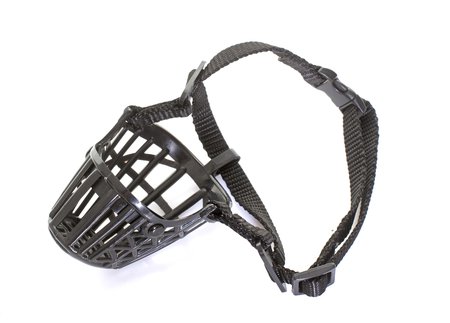Muzzles
Understanding Different Types of Dog Muzzles and Their Appropriate Uses
Dog muzzles are valuable tools used to ensure the safety of both dogs and humans in various situations. They come in different types and styles, each designed for specific purposes. Understanding the differences between dog muzzles and knowing when and how to use them appropriately is essential for responsible pet ownership. In this article, we will explore the various types of dog muzzles and provide guidance on when and how to use them effectively.
- Basket Muzzle: The basket muzzle is one of the most common types and is recognized for its practicality and safety. It is typically made of wire or plastic, allowing the dog to open its mouth, pant, and drink water while preventing biting or snapping. Basket muzzles are ideal for vet visits, grooming sessions, and socializing reactive dogs. They also come in handy during training sessions to ensure the safety of both the dog and the trainer.
- Soft Muzzle: Soft muzzles, often made from nylon or mesh, are more comfortable for dogs to wear for extended periods. They offer a snug fit and are suitable for short walks or trips to the veterinarian. However, they are not appropriate for aggressive or reactive dogs, as they don't provide sufficient protection against biting.
- Plastic Muzzle: Plastic muzzles are lightweight and typically used for temporary restraint during grooming or medical procedures. They are not recommended for long-term use or for dogs with a history of aggression, as they may restrict panting and cause discomfort.
- Leather Muzzle: Leather muzzles are durable and comfortable, but they should only be used for short periods. They are ideal for walks and trips to the park, offering a secure fit while allowing the dog to pant and drink. However, it's important to ensure that leather muzzles are properly fitted to avoid causing chafing or discomfort.
When to Use a Dog Muzzle:
- Veterinary Visits: Muzzles can be beneficial during veterinary visits, especially if the dog is fearful, aggressive, or uncomfortable with handling. Muzzling ensures the safety of the veterinary staff while allowing the dog to receive necessary medical care.
- Grooming Sessions: For dogs that are anxious or reactive during grooming sessions, muzzling can help prevent biting and ensure a stress-free experience for both the dog and the groomer.
- Reactive Behavior: If your dog exhibits reactive behavior, especially around other dogs or strangers, using a muzzle during walks or public outings can prevent potential incidents and provide peace of mind.
- Training Sessions: Muzzles can be useful during training sessions, particularly when working on behavior modification with aggressive or fearful dogs. They ensure the safety of the trainer while allowing the dog to learn and progress.
Tips for Introducing a Muzzle:
- Positive Association: Gradually introduce the muzzle to your dog in a positive and relaxed environment. Use treats, praise, and patience to create a positive association with the muzzle.
- Short Intervals: Start with short intervals of muzzle-wearing and gradually increase the duration over time. This helps your dog acclimate to wearing the muzzle without feeling overwhelmed.
- Proper Fit: Ensure the muzzle fits properly, allowing your dog to open its mouth and pant comfortably. Avoid tight fits that could cause discomfort or restrict breathing.
- Training and Reinforcement: Use positive reinforcement to reward your dog for wearing the muzzle and displaying calm behavior while wearing it.
Understanding the different types of dog muzzles and their appropriate uses is crucial for responsible pet ownership. Muzzles serve as valuable tools to ensure the safety of dogs and humans in various situations. When used correctly, muzzles can help dogs feel more comfortable, reduce stress, and prevent potential incidents. It is essential to choose the right type of muzzle for your dog's specific needs and ensure proper fitting and positive introduction. If you have any concerns or questions about using a muzzle for your dog, consult with a professional dog trainer or behaviorist for personalized guidance.


